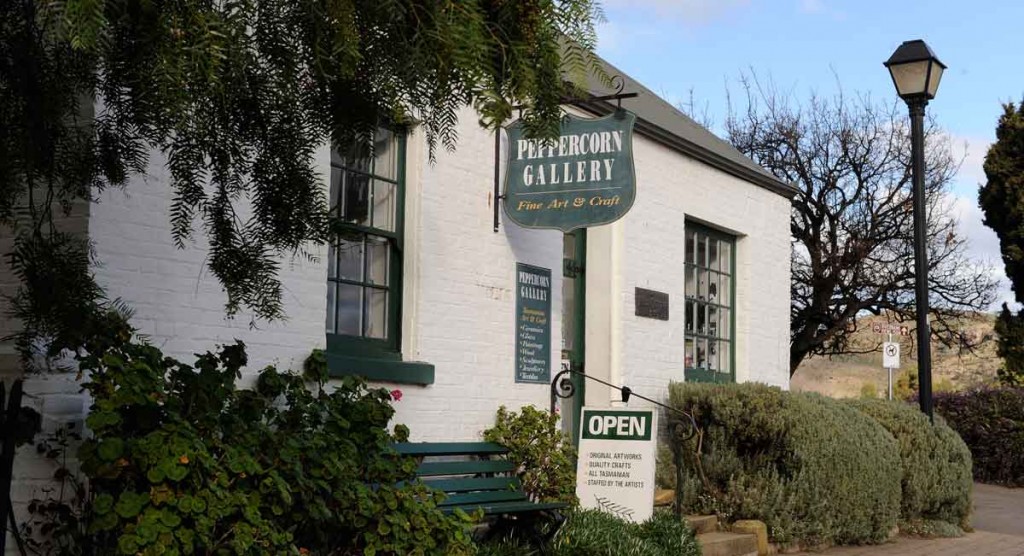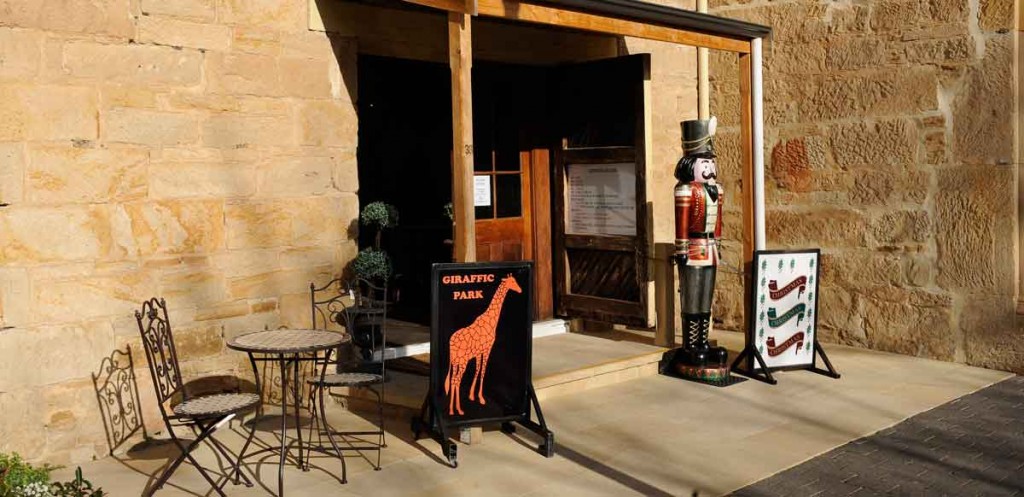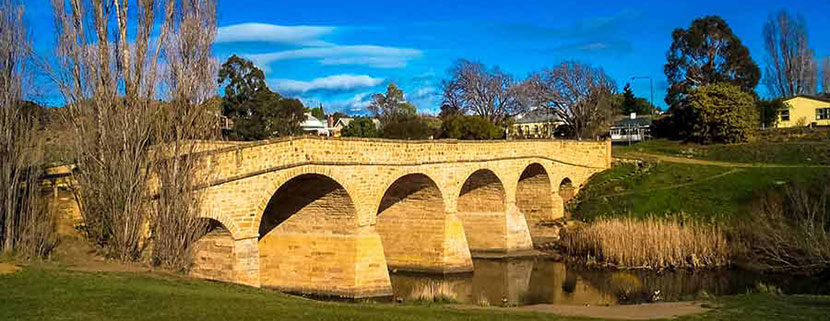One of the most popular tourist destinations in the Hobart area is the town of Richmond. Australia’s oldest bridge, oldest jail and oldest Roman Catholic Church are all located here and have been beautifully preserved, like many of the town’s other heritage buildings.
Richmond lies 27 km to the northeast of Hobart’s CBD and the easiest way to get here is to travel along the Tasman Highway, also known as the A3, and then turn north onto Cambridge Road, the B31. This route will take you into the heart of the Coal River Valley.
Richmond provides a great base for oenophiles wanting to visit the wineries of the Coal River Valley but many visitors come here instead to take a trip back into history: In 1803, a hunting party from Lieutenant John Bowden’s new settlement at Risdon Cove, the first settlement in Tasmania, went exploring eastwards of their new home. They came upon a valley with coal deposits and named the river here the Coal River.
The first land grants in the area of what was to become Richmond followed in 1823. This was also the year in which the Richmond Bridge was built to enable travellers to cross the Coal River. This bridge is still the town’s most famous and most photographed landmark and is Australia’s oldest bridge.
A year later the township was named when David Lord, at the time considered to be the richest man in Van Diemen’s Land, exchanged 90 acres of one of his estates, Richmond Park, for 1,400 acres of land nearby.
Because Tasmania in those early days was a penal colony, the authorities in Hobart Town soon found that they didn’t have the infrastructure to cope with all the new convict arrivals. They had to build more penal settlements and prisons and in 1825, Richmond Gaol was opened to serve the Richmond Courthouse, which was built at the same time. It wasn’t long though that even Richmond Gaol was so overcrowded that prisoners had to sleep in the passages. During the 1830s, the prison was extended to help alleviate the problem.
In 1832, an infamous murder took place in town. George Grover was an ex-convict who, when colonial architect and engineer John Lee Archer suggested rebuilding part of Richmond Bridge, was employed to oversee the convicts who had to carry the sandstone from the quarry. Grover was a cruel and aggressive man who enjoyed flogging the convicts but had the authorities on his side. Naturally the prisoners hated him. One night Grover got drunk and passed out on Richmond Bridge, which gave some of the prisoners the perfect opportuity to beat him up and throw him into the river. Nobody was ever convicted of the murder but it’s said that Grover’s ghost still haunts the bridge and is as disagreeable as the man was in life.

The Peppercorn Gallery at Richmond
Also in 1832, Richmond got its own post office. The opening, in the same year, of the penal colony at Port Arthur actually helped Richmond to grow. Richmond was along the way on the route to this notorious place on the Tasman Peninsula and was the obvious place to stop for the night. This meant the arrival of more inns, businesses like blacksmiths and a general store and even a market place.
One of those early inns was the Jolly Farmers Inn, the basement of which dates back to 1826 and which was built by Simon McCullough. McCullough was an Irish convict but when he helped to apprehend a murderer in 1825, he was pardoned, proving that there was redemption for criminals even in Van Diemen’s Land. McCullough kept expanding the building to transform it into a lovely Georgian house that served as his family’s home as well as an inn. Today the building is an attraction known as Tasmania’s History House.
Where there is a new town, a church will soon follow and in Richmond, where in the first few years the courthouse had been used for church services, 1834 saw Van Diemen’s Land’s lieutenant governor of the day, George Arthur, lay the foundation stone for St. Luke’s Anglican Church. This magnificent sandstone church was designed by John Lee Archer, was completed in 1835 and is still a Richmond landmark. Archer, incidentally, also designed the Richmond Gaol, the Richmond Barracks and the Richmond School House in these years.
Another stunning church that you can still visit in Richmond is St. John the Evangelist Roman Catholic Church, which is Australia’s oldest remaining Catholic church. In 1844 a Congregational Church followed but the building was demolished some thirty years later after severe storm damage. The current Congregational Church building dates from 1873, making it one of the town’s ‘younger’ landmarks.
Some of Richmond’s early homes have been preserved as well. Among these is Oak Lodge, which was built in the 1830s and has seen life as a rectory and a school. During the first half of the twentieth century Dr William Clark used the building as his surgery and today you can still see some of his medical equipment on display in the museum now housed here.
Another house possibly from around the 1830s is Reid’s Cottage, better known as Grannie Rhodes’ Cottage. It is named after Maria Wilby, who later was called Granny Rhodes and was quite a legendary local character. Today the cottage is the venue for a fun-filled history lesson in the form of a one-woman show telling Granny Rhodes’ extraordinary story.
When the Sorell Causeway was completed in 1872 to connect Hobart with the Tasman Peninsula, it bypassed Richmond. This meant the end of Richmond’s growth but a century later it turned out to be the town’s saving grace. Because Richmond suddenly became a quiet rural community, it remained virtually unchanged and its heritage buildings remained intact. In the 1970s, the town became a refuge for artists and craftspeople and its historic value was recognised.

Richmond Tasmania
A fantastic way to placate kids who get tired of being dragged from one old Georgian building to the next is to take them to the Old Hobart Town Model Village in Bridge Street. It shows what life was like in Hobart in the 1820s but does this on a miniature scale, with meticulously crafted model buildings, bonsai trees and tiny figurines. Just down the street is Richmond Maze, where the kids can burn some energy and, well, get lost for a while.
The countryside around Richmond has several wineries for the grown-ups to visit while the Zoodoo Wildlife Park will enchant young and old alike. This park is home to a collection of native species such as wallabies, wombats, koalas, kangaroos, quolls and of course Tasmanian devils. There are also exotic animals, including monkeys, Bengal tigers and rare white lions from Africa, as well as a farm yard and an indoor animal nursery. More recently the park also started offering visitors the opportunity to walk on water inside a giant waterball, which has nothing to do with history or wildlife but has everything to do with sheer unadulterated fun.

Richmond, Tasmania



